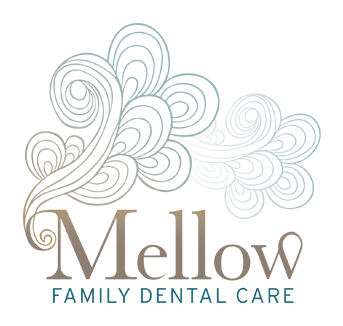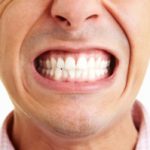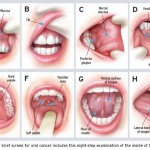Good oral hygiene is important for your overall health.
Here are some ideas to maintain your health:
1) Floss Daily
Every time you visit the dentist for a checkup, there’s one question you’re almost certain to hear: “Have you been flossing regularly?” For a lot of patients, the answer isn’t always yes. Many people make a point of brushing their teeth twice a day, as the American Dental Association (ADA) recommends, but fewer people follow the recommendation to floss at least once a day [source: ADA].
What many of these non-flossers don’t realize is that this step plays an important role in dental health. Unlike a toothbrush, which cleans the tops and outer surfaces of the teeth and gums, floss is an interdental cleaner– it’s designed specifically to clean the tight spaces between the teeth and the gap between the base of the teeth and the gums. These are places that a toothbrush can’t reach. And while antimicrobial mouthwash can kill the bacteria that form plaque, it can’t remove the stubborn tartar and bits of food that can lodge in these places [source: ADA].
How to FLOSS
1. Pull 18 to 24 inches of dental floss from the floss dispenser.
2. Wrap the ends of the floss around your index and middle fingers.
3. Hold the floss tightly around each tooth in a C shape; move the floss back and forth in a push-pull motion and up and down against the side of each tooth.
Flossing Techniques – Flossing Teeth Effectively – Colgate
2) Brush Twice daily
It is really important to brush morning and night. Use a soft brush or an electric brush and the right technique to prevent damage to your teeth. It is recommended to brush in circular motions, so as to avoid tooth brush abrasion which means that the enamel gets abraded with faulty tooth brushing and teeth get sensitive. Sometimes, the abrasion can be so severe that they have to be filled with a filling material.
3) Clean the tongue
The tongue harbors bacteria and food particles trapped under a thin layer of mucus. Remove this odor-causing buildup by using a small dab of toothpaste and carefully brushing the top of the tongue. Start by reaching to the back of the tongue, and then work forward toward the opening of the mouth. Brush the entire top surface of the tongue using gentle pressure, and finish by rinsing with water
Using a Tongue Scraper
For a more thorough cleaning, use a tongue scraper. This tool is usually made of soft, flexible plastic and gently peels the thin mucus-based layer of debris from the tongue. Rinse the scraper under warm water after each swipe of the tongue.
If your tongue feels sore or begins to bleed, you are using the tongue scraper with too much force. Work slowly and with light pressure. Concentrate on the center of the tongue where the bulk of odor-causing bacteria lies.
How Often to Clean Your Tongue
Each time you brush and floss your teeth, finish your dental care routine with a tongue cleaning. At a minimum, clean your tongue once in the morning and once in the evening before bedtime. If you have dry mouth or notice a foul taste in your mouth midday, try cleaning your tongue to remedy the situation.
A mouthwash rinse used after cleaning your tongue moisturizes the mouth and kills additional bacteria. Remember, maintaining fresh breath goes beyond routine tooth brushing. Getting into the habit of giving your tongue adequate attention will help keep your breath neutral and fresh.
Here at Mellow Dental serving the Tri-cities, Pitt Meadows, Maple Ridge, we take your overall health very seriously and our Hygienist educates all patients on how to maintain your oral hygiene well!


